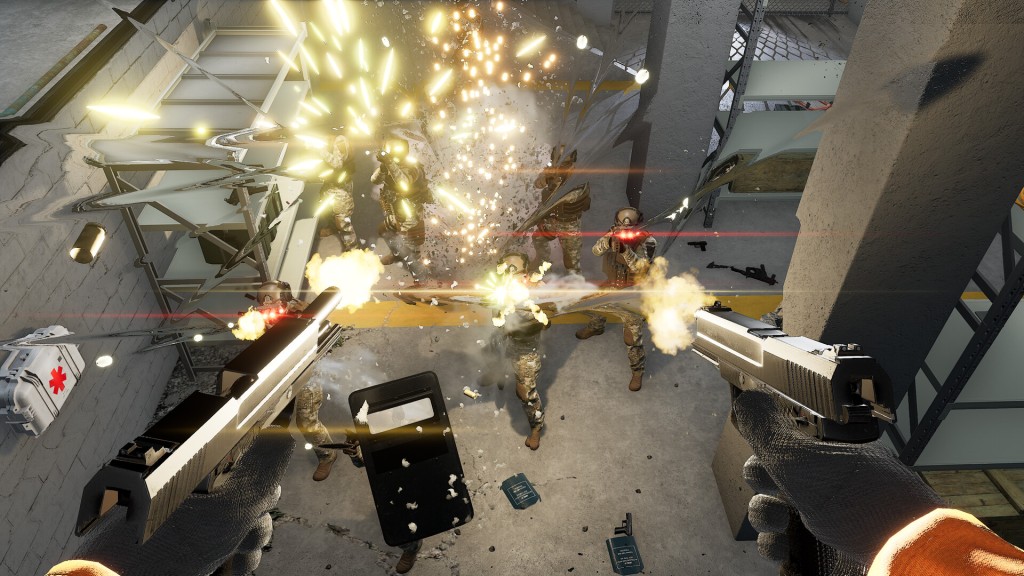Stride was played on an Oculus Quest 2 headset.
Before Stride was released, I had always wondered how parkour movement would translate to VR, especially in regards to Motion Sickness. However, Stride has finally answered that question and done so in a satisfying manner.
Stride is a fast-paced action parkour game that mixes platforming with intense gunfights. It had originally been released for the PCVR headsets but is now available natively on the Oculus Quest platform.
I haven’t had a chance to try the game out on the PC, but with the added affordability of movement from a standalone headset, the experience overall is more immersive and comfortable. I would argue that the experience is much better on the Oculus Quest due to the omission of wires and the inclusion of new features including gameplay improvements.

“With the added affordability of movement from a standalone headset, the experience overall is more immersive and comfortable.”
Currently, Stride features a few different game modes that each come with a unique twist. In Endless Mode, your aim to get as far as you can, dodging, jumping, shooting and punching your way across obstacles.
Furthermore, the creeping world-decay encourages you to stay on the move, making the experience even more intense. The Timed mode is a classic race against the clock, whilst my favorite one, Arena is action packed, allowing you to practice your movement and gunplay with random objectives that keep you your toes.
The game requires some physical movement, as it uses your swinging arms to build up speed, with actions like squatting and hand swings helping you slide under and jump over obstacles. The gun controls like you would expect, letting you easily point and shoot. The game does away with manual reloads which further help remove any hindrance to sustained movement.

“Actions like wall-running, ziplining and grappling feel intuitive to the experience.”
Overall, the controls are really fun and the latter parts of the levels can become a decent workout. The only gripe I have is regarding the hand swing required for the jump. The action on its own is not an issue but becomes one when you have to interrupt your swinging arm movement awkwardly.
Whilst it does encourage timing, the awkward position of your arms can throw you off during last-minute jumps, as you quickly try to transition to an upward arm swing whilst remembering to press the relevant button.
Whilst I do recommend experienced VR users to play the game standing up, I never felt a hint of motion sickness whilst dashing across the maps and jumping from varied elevations at breakneck speeds. Actions like wall-running, ziplining and grappling feel intuitive to the experience, with the simplicity required in their execution helping maintain the overall flow.
The added Melee combat makes the experience even more memorable, truly making you feel like John Wick and Faith (Mirror’s Edge) meshed into one. It takes a while getting used to all the different mechanics, but once you do, the momentum is exhilarating.

“Stride is an essential experience that should be in everyone’s library of VR games.”
Whilst the game currently has three different modes, the developers have promised to add more down the line. They are currently working on a story-driven campaign as well as multiplayer modes. Even then, for just £10.99, the experience is more than worth it.
With all the additions and improvements listed above, Stride is easily one of the most exciting VR games I have played. Not to mention, it fits superbly well on the Oculus Quest where you are not tied down with any wires, affording you a wider range of uninterrupted motion. Just be sure to watch out for anything hanging above your head!
If you own an Oculus Quest, Stride is an essential experience that should be in everyone’s library of VR games. I’d even go as far as to say that Stride can easily become a system-seller in the future with the upcoming additions.






Leave a comment